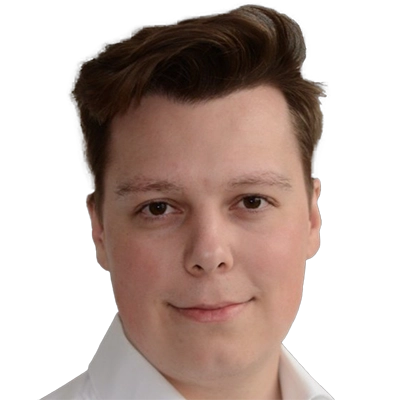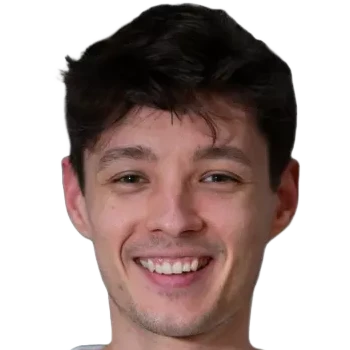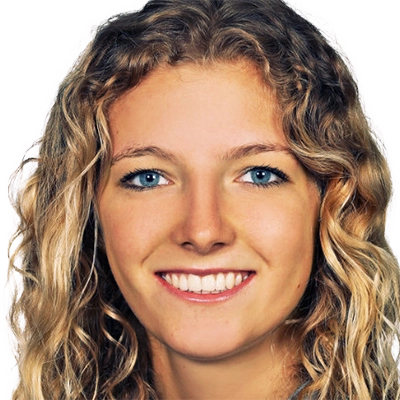Research Group Daniel Rückert
Daniel Rückert
is Alexander von Humboldt Professor for AI in Medicine and Healthcare at TU Munich. He is also a Professor at Imperial College London.
He gained a MSc from Technical University Berlin in 1993, a PhD from Imperial College in 1997, followed by a post-doc at King’s College London. In 1999 he joined Imperial College as a Lecturer, becoming Senior Lecturer in 2003 and full Professor in 2005. From 2016 to 2020 he served as Head of the Department of Computing at Imperial College. His field of research is the area of Artificial Intelligence and Machine Learning and their application to medicine and healthcare. In 2025, he received Germany’s highest research honor, the prestigious Gottfried Wilhelm Leibniz Prize for his groundbreaking work in AI-assisted medical imaging.
Team members @MCML
PostDocs
PhD Students
Recent News @MCML
Publications @MCML
2026
Improving out-of-domain generalization in Multiple Sclerosis detection and segmentation using Random Convolutions.
Pattern Recognition Letters 199. Jan. 2026. DOI
2025
Train Forwards, Optimize Backwards: Neural Surrogates for Personalized Medical Simulations.
DiffSys @EurIPS 2025 - Workshop on Differentiable Systems and Scientific Machine Learning at the European Conference on Information Processing Systems. Copenhagen, Denmark, Dec 03-05, 2025. To be published. Preprint available. URL
Versatile and comprehensive hyperspectral imaging tool for molecular neuronavigation: a case study on cerebral gliomas.
Journal of Biomedical Optics 30.12. Dec. 2025. DOI
A Label-Free Hyperspectral Imaging Device for Ex Vivo Characterization and Grading of Meningioma Tissues.
Journal of Biophotonics Early Access. Dec. 2025. DOI
Mapping Neurochemical Signatures onto Brain Structure for Neurotransmitter-Informed Discrimination of Schizophrenia Patients from Healthy Controls.
Preprint (Dec. 2025). DOI
Disentangling Progress in Medical Image Registration: Beyond Trend-Driven Architectures towards Domain-Specific Strategies.
Preprint (Dec. 2025). arXiv GitHub
Optimizing Rank for High-Fidelity Implicit Neural Representations.
Preprint (Dec. 2025). arXiv GitHub
promptolution: A Unified, Modular Framework for Prompt Optimization.
Preprint (Dec. 2025). arXiv
Addressing Annotation Scarcity in Hyperspectral Brain Image Segmentation with Unsupervised Domain Adaptation.
SIPAIM 2025 - 21st International Symposium on Biomedical Image Processing and Analysis. Pasto, Colombia, Nov 19-21, 2025. DOI
From Model Based to Learned Regularization in Medical Image Registration: A Comprehensive Review.
Medical Image Analysis.103854. Nov. 2025. In press. DOI
LungEvaty: A Scalable, Open-Source Transformer-based Deep Learning Model for Lung Cancer Risk Prediction in LDCT Screening.
Preprint (Nov. 2025). arXiv
Interpretable Retinal Disease Prediction Using Biology-Informed Heterogeneous Graph Representations.
Preprint (Nov. 2025). arXiv
Geometrically-grounded implicit representations of 3D+time cardiac function from magnetic resonance slices.
Preprint (Nov. 2025). URL
SegMaST: Mamba-based Spatio-Temporal Modeling to Improve Longitudinal Detection and Segmentation.
Preprint (Nov. 2025). URL
Brains Don't Wait for Solvers: Fast Tumor Inversion through Differentiable Simulation.
Preprint (Nov. 2025). URL
Evaluating the Impact of Medical Image Reconstruction on Downstream AI Fairness and Performance.
Preprint (Nov. 2025). URL
No Image, No Problem: End-to-End Multi-Task Cardiac Analysis Straight from Undersampled k-Space.
Preprint (Nov. 2025). URL
A Biophysically-Conditioned Generative Framework for 3D Brain Tumor MRI Synthesis.
Preprint (Oct. 2025). arXiv GitHub
Independent Benchmarking of Prompt-Based Medical Segmentation Models.
Preprint (Oct. 2025). DOI
Efficient numeracy in language models through single-token number embeddings.
Preprint (Oct. 2025). arXiv
Evaluation of Deformable Image Registration Under Alignment-Regularity Trade-Off.
BRIDGE @MICCAI 2025 - Workshop on Bridging Regulatory Science and Medical AI at 28th International Conference on Medical Image Computing and Computer Assisted Intervention. Daejeon, Republic of Korea, Sep 23-27, 2025. DOI GitHub
Redefining spectral unmixing for in-vivo brain tissue analysis from hyperspectral imaging.
CMMCA @MICCAI 2025 - Workshop on Computational Mathematics Modeling in Cancer Analysis at 28th International Conference on Medical Image Computing and Computer Assisted Intervention. Daejeon, Republic of Korea, Sep 23-27, 2025. DOI
A Lightweight Optimization Framework for Estimating 3D Brain Tumor Infiltration.
CMMCA @MICCAI 2025 - Workshop on Computational Mathematics Modeling in Cancer Analysis at 28th International Conference on Medical Image Computing and Computer Assisted Intervention. Daejeon, Republic of Korea, Sep 23-27, 2025. DOI
Reconstruct or Generate: Exploring the Spectrum of Generative Modeling for Cardiac MRI.
DGM4 @MICCAI 2025 - 5th Deep Generative Models Workshop at 28th International Conference on Medical Image Computing and Computer Assisted Intervention. Daejeon, Republic of Korea, Sep 23-27, 2025. DOI
Predicting Longitudinal Brain Development via Implicit Neural Representations.
MICCAI 2025 - 28th International Conference on Medical Image Computing and Computer Assisted Intervention. Daejeon, Republic of Korea, Sep 23-27, 2025. DOI
MM-DINOv2: Adapting Foundation Models for Multi-Modal Medical Image Analysis.
MICCAI 2025 - 28th International Conference on Medical Image Computing and Computer Assisted Intervention. Daejeon, Republic of Korea, Sep 23-27, 2025. DOI
Contrastive Anatomy-Contrast Disentanglement: A Domain-General MRI Harmonization Method.
MICCAI 2025 - 28th International Conference on Medical Image Computing and Computer Assisted Intervention. Daejeon, Republic of Korea, Sep 23-27, 2025. DOI
Global and Local Contrastive Learning for Joint Representations from Cardiac MRI and ECG.
MICCAI 2025 - 28th International Conference on Medical Image Computing and Computer Assisted Intervention. Daejeon, Republic of Korea, Sep 23-27, 2025. DOI GitHub
A Holistic Time-Aware Classification Model for Multimodal Longitudinal Patient Data.
MICCAI 2025 - 28th International Conference on Medical Image Computing and Computer Assisted Intervention. Daejeon, Republic of Korea, Sep 23-27, 2025. DOI GitHub
Physics-Informed Joint Multi-TE Super-Resolution with Implicit Neural Representation for Robust Fetal T2 Mapping.
PIPPI @MICCAI 2025 - 10th Workshop in Perinatal, Preterm and Paediatric Image Analysis at the 28th International Conference on Medical Image Computing and Computer Assisted Intervention. Daejeon, Republic of Korea, Sep 23-27, 2025. DOI
Parametric shape models for vessels learned from segmentations via differentiable voxelization.
ShapeMI @MICCAI 2025 - Workshop on Shape in Medical Imaging at the 28th International Conference on Medical Image Computing and Computer Assisted Intervention. Daejeon, Republic of Korea, Sep 23-27, 2025. DOI
GReAT: leveraging geometric artery data to improve wall shear stress assessment.
ShapeMI @MICCAI 2025 - Workshop on Shape in Medical Imaging at the 28th International Conference on Medical Image Computing and Computer Assisted Intervention. Daejeon, Republic of Korea, Sep 23-27, 2025. DOI
CAPO: Cost-Aware Prompt Optimization.
AutoML 2025 - International Conference on Automated Machine Learning. New York City, NY, USA, Sep 08-11, 2025. To be published. Preprint available. arXiv
MultiMAE for Brain MRIs: Robustness to Missing Inputs Using Multi-Modal Masked Autoencoder.
Preprint (Sep. 2025). arXiv
Does DINOv3 Set a New Medical Vision Standard?
Preprint (Sep. 2025). arXiv
Diff-Def: Diffusion-Generated Deformation Fields for Conditional Atlases.
IEEE Transactions on Medical Imaging Early Access. Aug. 2025. DOI
Deformable image registration of dark-field chest radiographs for functional lung assessment.
Medical Physics 52.8. Aug. 2025. DOI
Specialized curricula for training vision language models in retinal image analysis.
npj Digital Medicine 8.532. Aug. 2025. DOI
Latent Interpolation Learning Using Diffusion Models for Cardiac Volume Reconstruction.
Preprint (Aug. 2025). arXiv
Beyond Benchmarks: Dynamic, Automatic And Systematic Red-Teaming Agents For Trustworthy Medical Language Models.
Preprint (Aug. 2025). arXiv
Benchmarking the CoW with the TopCoW Challenge: Topology-Aware Anatomical Segmentation of the Circle of Willis for CTA and MRA.
Preprint (Jul. 2025). arXiv
A Tale of Two Classes: Adapting Supervised Contrastive Learning to Binary Imbalanced Datasets.
CVPR 2025 - IEEE/CVF Conference on Computer Vision and Pattern Recognition. Nashville, TN, USA, Jun 11-15, 2025. DOI
User-Level Differential Privacy in Medical Machine Learning.
TPDP 2025 - Workshop on Theory and Practice of Differential Privacy. Google, Mountain View, CA, USA, Jun 02-03, 2025. PDF
Exploring the Predictive Value of Structural Covariance Networks for the Diagnosis of Schizophrenia.
Frontiers in Psychiatry 16. Jun. 2025. DOI
Deep learning-enabled MRI phenotyping uncovers regional body composition heterogeneity and disease associations in two European population cohorts.
Preprint (Jun. 2025). DOI
Pitfalls of topology-aware image segmentation.
IPMI 2025 - Information Processing in Medical Imaging. Kos Island, Greece, May 25-30, 2025. DOI
On Arbitrary Predictions from Equally Valid Models.
Preprint (May. 2025). arXiv
SIM: Surface-based fMRI Analysis for Inter-Subject Multimodal Decoding from Movie-Watching Experiments.
ICLR 2025 - 13th International Conference on Learning Representations. Singapore, Apr 24-28, 2025. URL GitHub
Laplace Sample Information: Data Informativeness Through a Bayesian Lens.
ICLR 2025 - 13th International Conference on Learning Representations. Singapore, Apr 24-28, 2025. URL
Topograph: An efficient Graph-Based Framework for Strictly Topology Preserving Image Segmentation.
ICLR 2025 - 13th International Conference on Learning Representations. Singapore, Apr 24-28, 2025. URL
Differentially Private Active Learning: Balancing Effective Data Selection and Privacy.
SaTML 2025 - IEEE Conference on Secure and Trustworthy Machine Learning. Copenhagen, Denmark, Apr 09-11, 2025. DOI
Unlocking the diagnostic potential of electrocardiograms through information transfer from cardiac magnetic resonance imaging.
Medical Image Analysis 101.103451. Apr. 2025. DOI GitHub
Visual Privacy Auditing with Diffusion Models.
Transactions on Machine Learning Research. Mar. 2025. URL
Addressing complex structures of measurement error arising in the exposure assessment in occupational epidemiology using a Bayesian hierarchical approach.
Preprint (Mar. 2025). arXiv
From Pixels to Histopathology: A Graph-Based Framework for Interpretable Whole Slide Image Analysis.
Preprint (Mar. 2025). arXiv GitHub
Cross-Domain and Cross-Dimension Learning for Image-to-Graph Transformers.
WACV 2025 - IEEE/CVF Winter Conference on Applications of Computer Vision. Tucson, AZ, USA, Feb 28-Mar 04, 2025. DOI
Evaluating normative representation learning in generative AI for robust anomaly detection in brain imaging.
Nature Communications 16.1624. Feb. 2025. DOI GitHub
Are foundation models useful feature extractors for electroencephalography analysis?
Preprint (Feb. 2025). arXiv
Deformable Image Registration of Dark-Field Chest Radiographs for Local Lung Signal Change Assessment.
Preprint (Jan. 2025). arXiv
Efficient Deep Learning-based Forward Solvers for Brain Tumor Growth Models.
Preprint (Jan. 2025). arXiv
TimeFlow: Longitudinal Brain Image Registration and Aging Progression Analysis.
Preprint (Jan. 2025). arXiv
2024
A Practical Guide to Fine-tuning Language Models with Limited Data.
Preprint (Nov. 2024). arXiv
Complex-Valued Federated Learning with Differential Privacy and MRI Applications.
DeCaF @MICCAI 2024 - 5th Workshop on Distributed, Collaborative and Federated Learning at the 27th International Conference on Medical Image Computing and Computer Assisted Intervention. Marrakesh, Morocco, Oct 06-10, 2024. DOI
Supervised Contrastive Learning for Image-to-Graph Transformers.
GRAIL @MICCAI 2024 - 6th Workshop on GRaphs in biomedicAl Image anaLysis at the 27th International Conference on Medical Image Computing and Computer Assisted Intervention. Marrakesh, Morocco, Oct 06-10, 2024. DOI
Exploring Graphs as Data Representation for Disease Classification in Ophthalmology.
GRAIL @MICCAI 2024 - 6th Workshop on GRaphs in biomedicAl Image anaLysis at the 27th International Conference on Medical Image Computing and Computer Assisted Intervention. Marrakesh, Morocco, Oct 06-10, 2024. DOI URL
Topologically faithful multi-class segmentation in medical images.
MICCAI 2024 - 27th International Conference on Medical Image Computing and Computer Assisted Intervention. Marrakesh, Morocco, Oct 06-10, 2024. DOI
Language Models Meet Anomaly Detection for Better Interpretability and Generalizability.
MMMI @MICCAI 2024 - 5th International Workshop on Multiscale Multimodal Medical Imaging at the 27th International Conference on Medical Image Computing and Computer Assisted Intervention. Marrakesh, Morocco, Oct 06-10, 2024. DOI GitHub
Mamba? Catch The Hype Or Rethink What Really Helps for Image Registration.
WBIR @MICCAI 2024 - 11th International Workshop on Biomedical Image Registration at the 27th International Conference on Medical Image Computing and Computer Assisted Intervention. Marrakesh, Morocco, Oct 06-10, 2024. DOI
General Vision Encoder Features as Guidance in Medical Image Registration.
WBIR @MICCAI 2024 - 11th International Workshop on Biomedical Image Registration at the 27th International Conference on Medical Image Computing and Computer Assisted Intervention. Marrakesh, Morocco, Oct 06-10, 2024. DOI URL
ChEX: Interactive Localization and Region Description in Chest X-rays.
ECCV 2024 - 18th European Conference on Computer Vision. Milano, Italy, Sep 29-Oct 04, 2024. DOI GitHub
Distributed non-disclosive validation of predictive models by a modified ROC-GLM.
BMC Medical Research Methodology 24.190. Aug. 2024. DOI
Deep learning for autosegmentation for radiotherapy treatment planning: State-of-the-art and novel perspectives.
Strahlentherapie und Onkologie 201. Aug. 2024. DOI GitHub
Beyond the Calibration Point: Mechanism Comparison in Differential Privacy.
ICML 2024 - 41st International Conference on Machine Learning. Vienna, Austria, Jul 21-27, 2024. URL
FlexR: Few-shot Classification with Language Embeddings for Structured Reporting of Chest X-rays.
MIDL 2024 - Medical Imaging with Deep Learning. Paris, France, Jul 03-05, 2024. URL
Retinal small vessel pathology is associated with disease burden in multiple sclerosis.
Multiple Sclerosis Journal 30.7. Jun. 2024. DOI
Reconciling privacy and accuracy in AI for medical imaging.
Nature Machine Intelligence 6. Jun. 2024. DOI
Intensity-based 3D motion correction for cardiac MR images.
ISBI 2024 - IEEE 21st International Symposium on Biomedical Imaging. Athens, Greece, May 27-30, 2024. DOI
Direct Cardiac Segmentation from Undersampled K-Space using Transformers.
ISBI 2024 - IEEE 21st International Symposium on Biomedical Imaging. Athens, Greece, May 27-30, 2024. DOI
Reconstruction-free segmentation from undersampled k-space using transformers.
ISMRM 2024 - International Society for Magnetic Resonance in Medicine Annual Meeting. Singapore, May 04-09, 2024. URL
Preserving fairness and diagnostic accuracy in private large-scale AI models for medical imaging.
Communications Medicine 4.46. Mar. 2024. DOI
Synthetic Optical Coherence Tomography Angiographs for Detailed Retinal Vessel Segmentation Without Human Annotations.
IEEE Transactions on Medical Imaging 43.6. Jan. 2024. DOI
2023
Optimal privacy guarantees for a relaxed threat model: Addressing sub-optimal adversaries in differentially private machine learning.
NeurIPS 2023 - 37th Conference on Neural Information Processing Systems. New Orleans, LA, USA, Dec 10-16, 2023. URL
Federated electronic health records for the European Health Data Space.
The Lancet Digital Health 5.11. Nov. 2023. DOI
Metrics to Quantify Global Consistency in Synthetic Medical Images.
DGM4 @MICCAI 2023 - 3rd International Workshop on Deep Generative Models at the 26th International Conference on Medical Image Computing and Computer Assisted Intervention. Vancouver, Canada, Oct 08-12, 2023. DOI
Towards Generalised Neural Implicit Representations for Image Registration.
DGM4 @MICCAI 2023 - 3rd International Workshop on Deep Generative Models at the 26th International Conference on Medical Image Computing and Computer Assisted Intervention. Vancouver, Canada, Oct 08-12, 2023. DOI
Clustering Disease Trajectories in Contrastive Feature Space for Biomarker Proposal in Age-Related Macular Degeneration.
MICCAI 2023 - 26th International Conference on Medical Image Computing and Computer Assisted Intervention. Vancouver, Canada, Oct 08-12, 2023. DOI
NISF: Neural implicit segmentation functions.
MICCAI 2023 - 26th International Conference on Medical Image Computing and Computer Assisted Intervention. Vancouver, Canada, Oct 08-12, 2023. DOI
A Skeletonization Algorithm for Gradient-Based Optimization.
ICCV 2023 - IEEE/CVF International Conference on Computer Vision. Paris, France, Oct 02-06, 2023. DOI
Rethinking Feature Attribution for Neural Network Explanation.
Dissertation TU München. Aug. 2023. URL
2022
Relationformer: A Unified Framework for Image-to-Graph Generation.
ECCV 2022 - 17th European Conference on Computer Vision. Tel Aviv, Israel, Oct 23-27, 2022. DOI GitHub
Interpretable Vertebral Fracture Diagnosis.
iMIMIC @MICCAI 2022 - Workshop on Interpretability of Machine Intelligence in Medical Image Computing at the 25th International Conference on Medical Image Computing and Computer Assisted Intervention. Singapore, Sep 18-22, 2022. DOI GitHub
Analyzing the Effects of Handling Data Imbalance on Learned Features from Medical Images by Looking Into the Models.
IMLH @ICML 2022 - 2nd Workshop on Interpretable Machine Learning in Healthcare at the 39th International Conference on Machine Learning. Baltimore, MD, USA, Jul 17-23, 2022. arXiv
Do Explanations Explain? Model Knows Best.
CVPR 2022 - IEEE/CVF Conference on Computer Vision and Pattern Recognition. New Orleans, LA, USA, Jun 19-24, 2022. DOI GitHub
Few-shot Structured Radiology Report Generation Using Natural Language Prompts.
Preprint (Mar. 2022). arXiv
2021
Fine-Grained Neural Network Explanation by Identifying Input Features with Predictive Information.
NeurIPS 2021 - Track on Datasets and Benchmarks at the 35th Conference on Neural Information Processing Systems. Virtual, Dec 06-14, 2021. URL
Towards Semantic Interpretation of Thoracic Disease and COVID-19 Diagnosis Models.
MICCAI 2021 - 24th International Conference on Medical Image Computing and Computer Assisted Intervention. Strasbourg, France, Sep 27-Oct 01, 2021. DOI GitHub
Explaining COVID-19 and Thoracic Pathology Model Predictions by Identifying Informative Input Features.
MICCAI 2021 - 24th International Conference on Medical Image Computing and Computer Assisted Intervention. Strasbourg, France, Sep 27-Oct 01, 2021. DOI GitHub
Neural Response Interpretation through the Lens of Critical Pathways.
CVPR 2021 - IEEE/CVF Conference on Computer Vision and Pattern Recognition. Virtual, Jun 19-25, 2021. DOI
2020
Spatio-temporal learning from longitudinal data for multiple sclerosis lesion segmentation.
BrainLes @MICCAI 2020 - Workshop on Brainlesion: Glioma, Multiple Sclerosis, Stroke and Traumatic Brain Injuries at the 23rd International Conference on Medical Image Computing and Computer Assisted Intervention. Virtual, Oct 04-08, 2020. DOI GitHub
©all images: LMU | TUM












